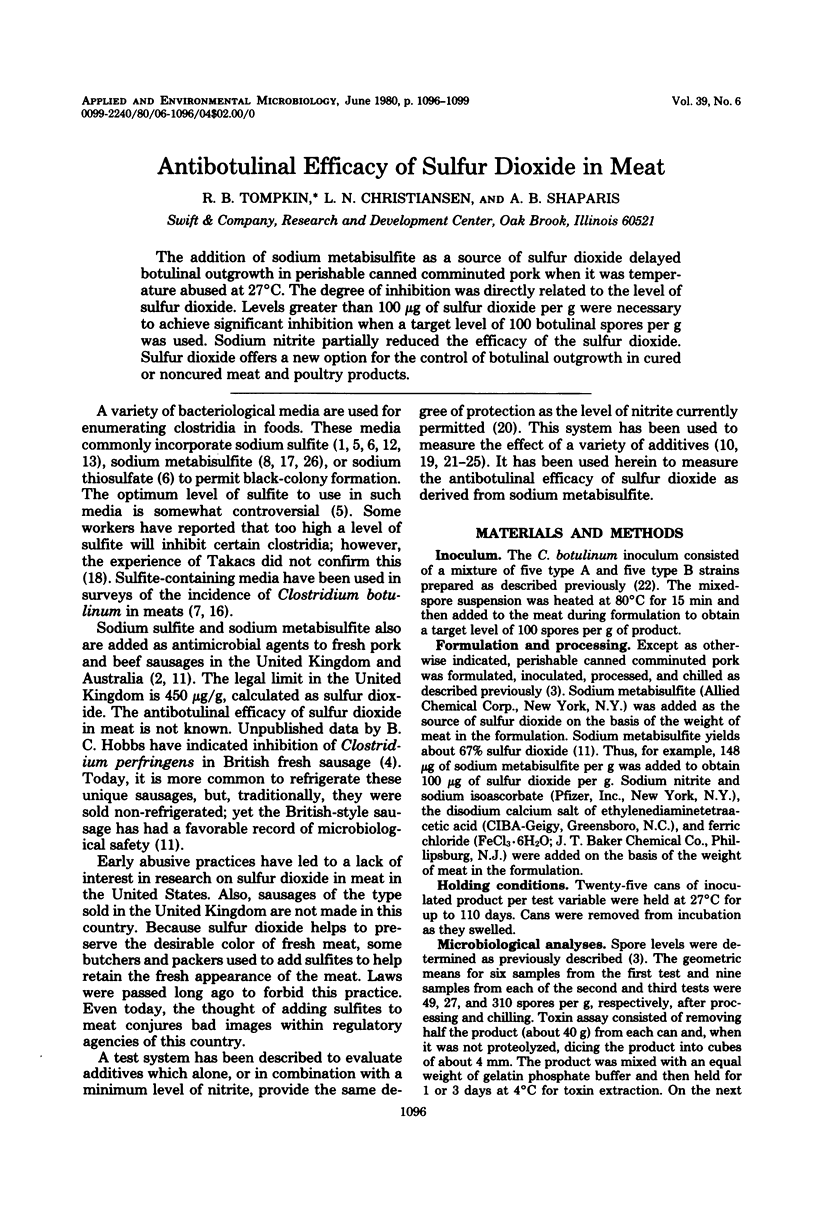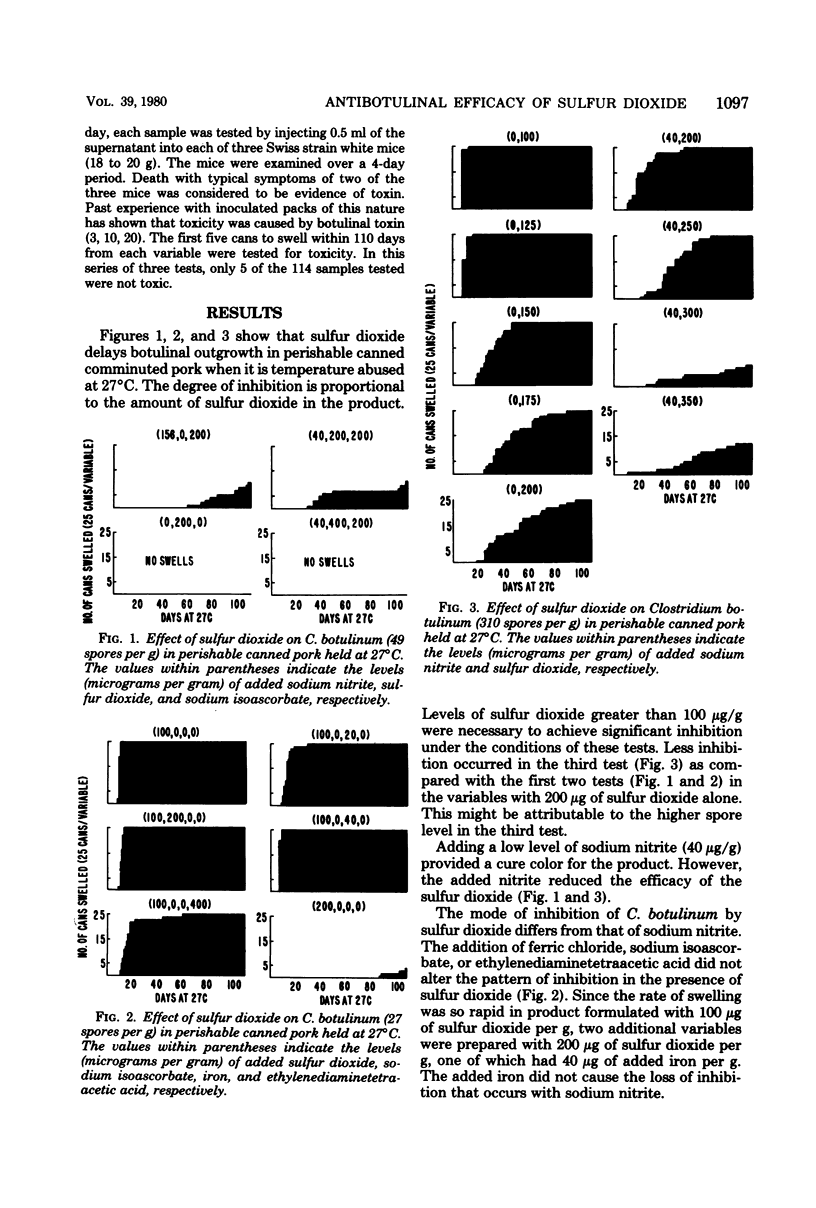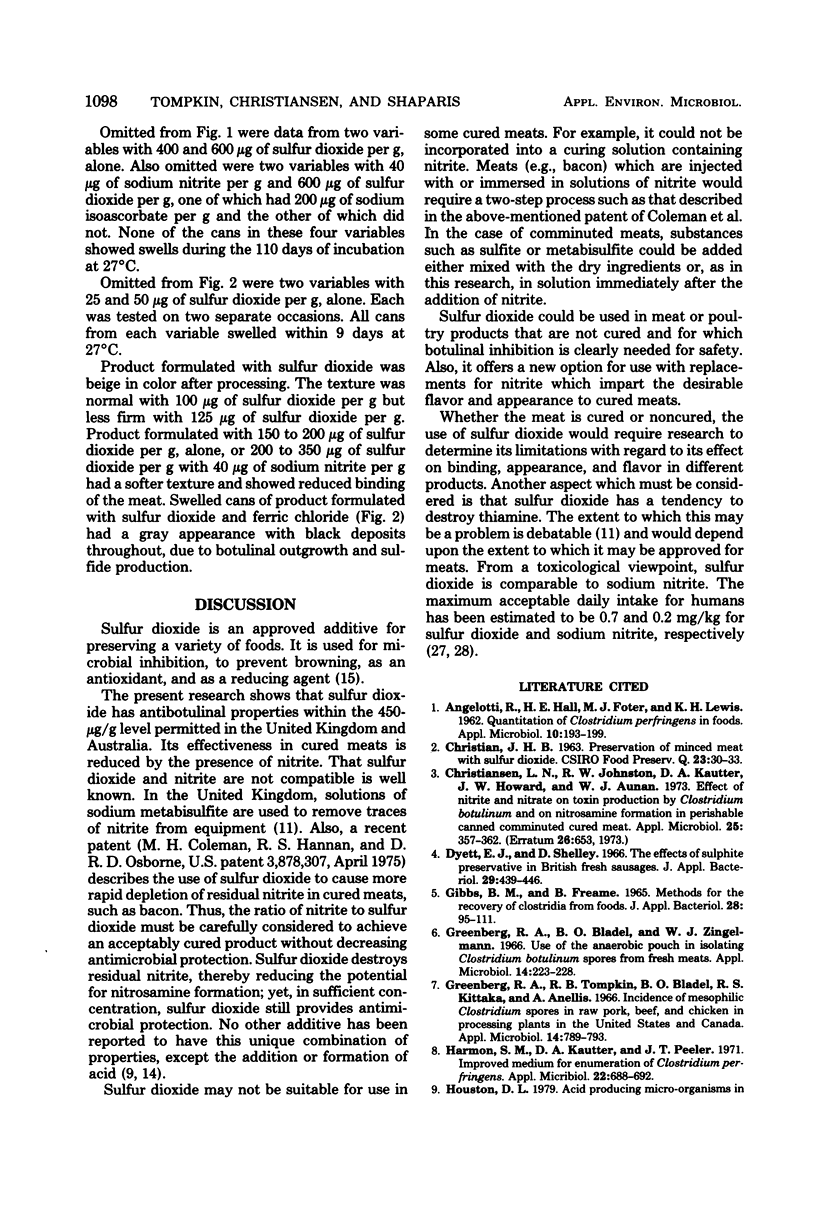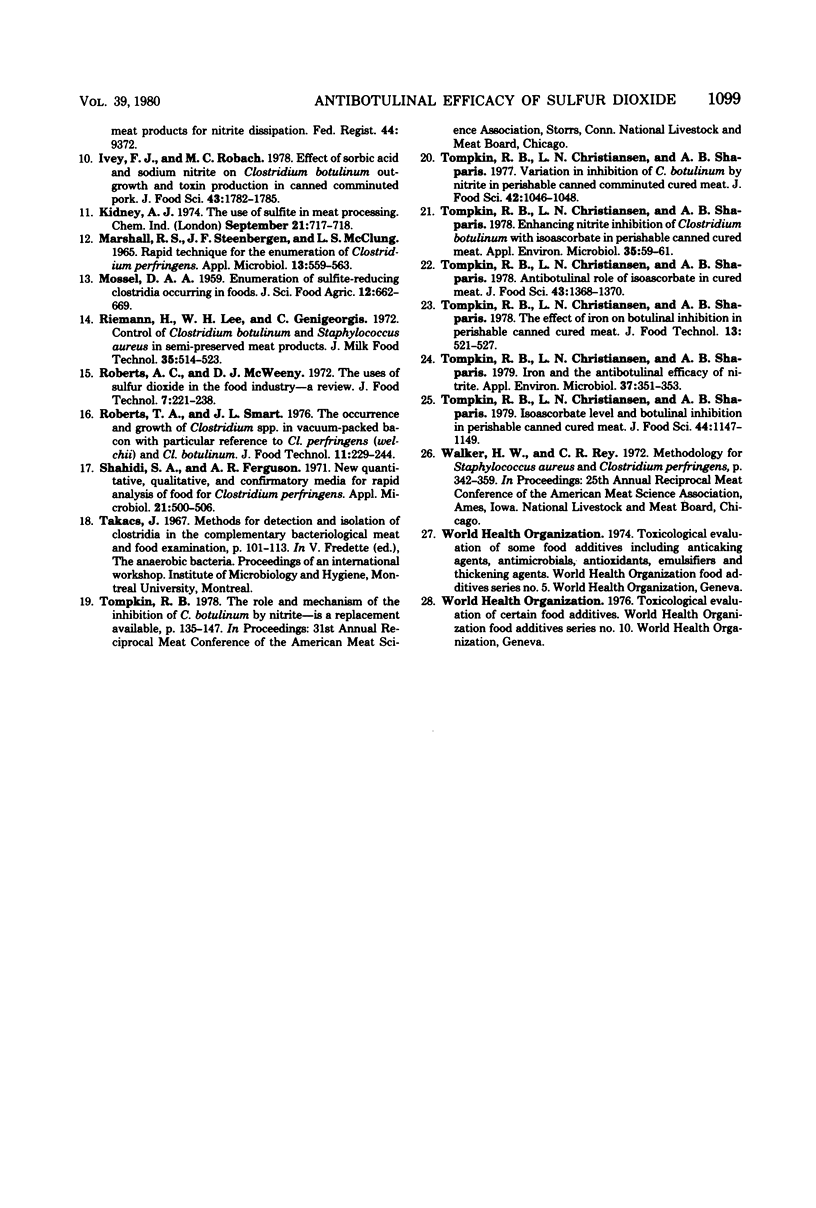Abstract
The addition of sodium metabisulfite as a source of sulfur dioxide delayed botulinal outgrowth in perishable canned comminuted pork when it was temperature abused at 27 degree C. The degree of inhibition was directly related to the level of sulfur dioxide. Levels greater than 100 microgram of sulfur dioxide per g were necessary to achieve significant inhibition when a target level of 100 botulinal spores per g was used. Sodium nitrite partially reduced the efficacy of the sulfur dioxide. Sulfur dioxide offers a new option for the control of botulinal outgrowth in cured or noncured meat and poultry products.
Full text
PDF



Selected References
These references are in PubMed. This may not be the complete list of references from this article.
- ANGELOTTI R., HALL H. E., FOTER M. J., LEWIS K. H. Quantitation of Clostridium perfringens in foods. Appl Microbiol. 1962 May;10:193–199. doi: 10.1128/am.10.3.193-199.1962. [DOI] [PMC free article] [PubMed] [Google Scholar]
- Christiansen L. N., Johnston R. W., Kautter D. A., Howard J. W., Aunan W. J. Effect of nitrite and nitrate on toxin production by Clostridium botulinum and on nitrosamine formation in perishable canned comminuted cured meat. Appl Microbiol. 1973 Mar;25(3):357–362. doi: 10.1128/am.25.3.357-362.1973. [DOI] [PMC free article] [PubMed] [Google Scholar]
- Dyett E. J., Shelley D. The effects of sulphite preservative in British fresh sausages. J Appl Bacteriol. 1966 Dec;29(3):439–446. doi: 10.1111/j.1365-2672.1966.tb03495.x. [DOI] [PubMed] [Google Scholar]
- Greenberg R. A., Bladel B. O., Zingelmann W. J. Use of the anaerobic pouch in isolating Clostridium botulinum spores from fresh meats. Appl Microbiol. 1966 Mar;14(2):223–228. doi: 10.1128/am.14.2.223-228.1966. [DOI] [PMC free article] [PubMed] [Google Scholar]
- Greenberg R. A., Tompkin R. B., Bladel B. O., Kittaka R. S., Anellis A. Incidence of mesophilic Clostridium spores in raw pork, beef, and chicken in processing plants in the United States and Canada. Appl Microbiol. 1966 Sep;14(5):789–793. doi: 10.1128/am.14.5.789-793.1966. [DOI] [PMC free article] [PubMed] [Google Scholar]
- Harmon S. M., Kautter D. A., Peeler J. T. Improved medium for enumeration of Clostridium perfringens. Appl Microbiol. 1971 Oct;22(4):688–692. doi: 10.1128/am.22.4.688-692.1971. [DOI] [PMC free article] [PubMed] [Google Scholar]
- MARSHALL R. S., STEENBERGEN J. F., MCCLUNG L. S. RAPID TECHNIQUE FOR THE ENUMERATION OF CLOSTRIDIUM PERFINGENS. Appl Microbiol. 1965 Jul;13:559–563. doi: 10.1128/am.13.4.559-563.1965. [DOI] [PMC free article] [PubMed] [Google Scholar]
- Shahidi S. A., Ferguson A. R. New quantitative, qualitative, and confirmatory media for rapid analysis of food for Clostridium perfringens. Appl Microbiol. 1971 Mar;21(3):500–506. doi: 10.1128/am.21.3.500-506.1971. [DOI] [PMC free article] [PubMed] [Google Scholar]
- Tompkin R. B., Christiansen L. N., Shaparis A. B. Enhancing nitrite inhibition of Clostridium botulinum with isoascorbate in perishable canned cured meat. Appl Environ Microbiol. 1978 Jan;35(1):59–61. doi: 10.1128/aem.35.1.59-61.1978. [DOI] [PMC free article] [PubMed] [Google Scholar]
- Tompkin R. B., Christiansen L. N., Shaparis A. B. Iron and the antibotulinal efficacy of nitrite. Appl Environ Microbiol. 1979 Feb;37(2):351–353. doi: 10.1128/aem.37.2.351-353.1979. [DOI] [PMC free article] [PubMed] [Google Scholar]


